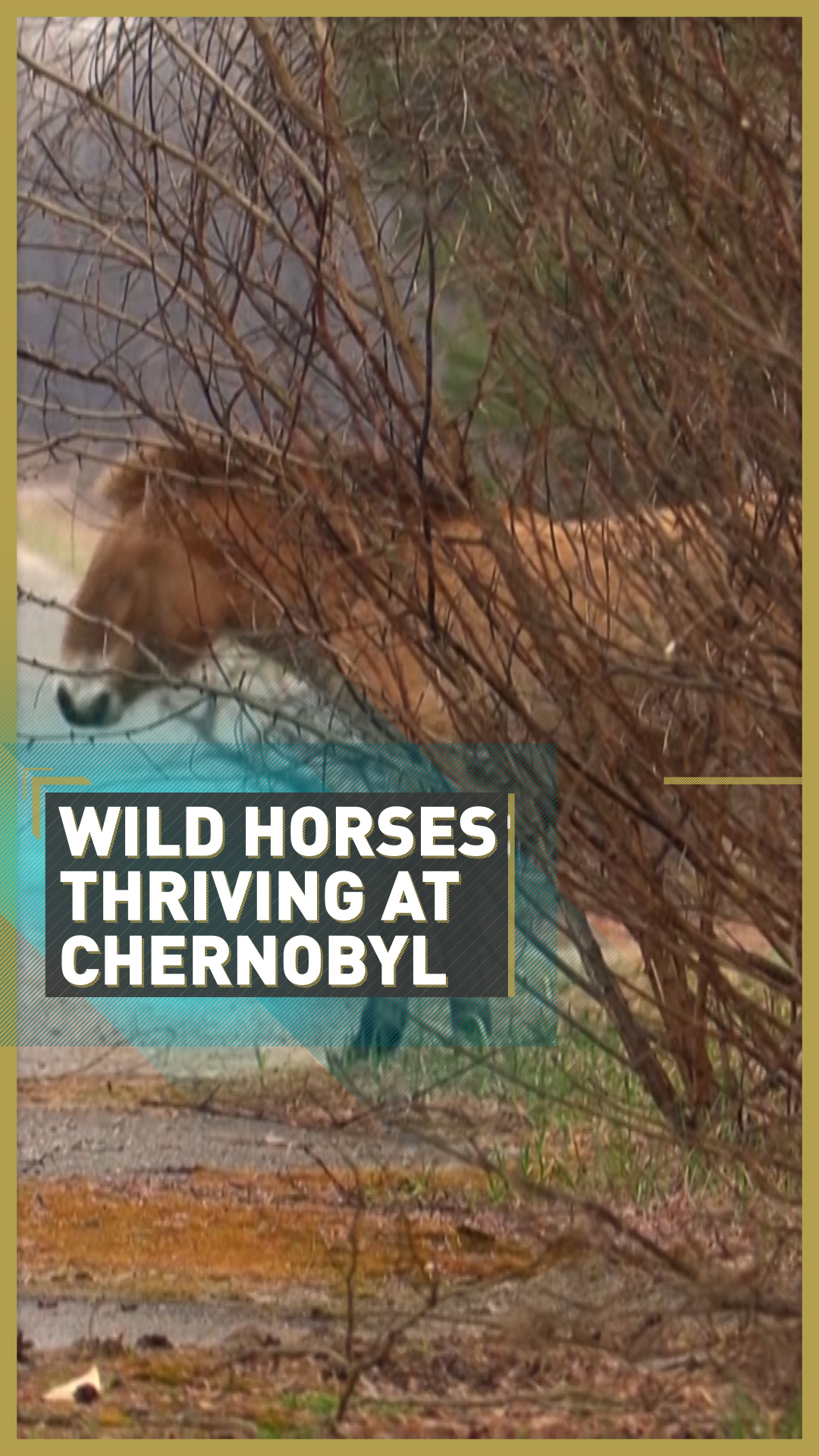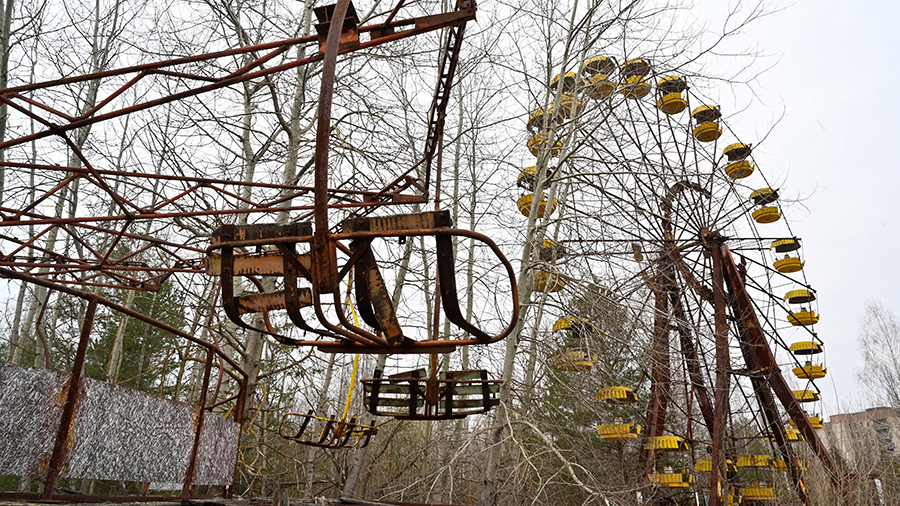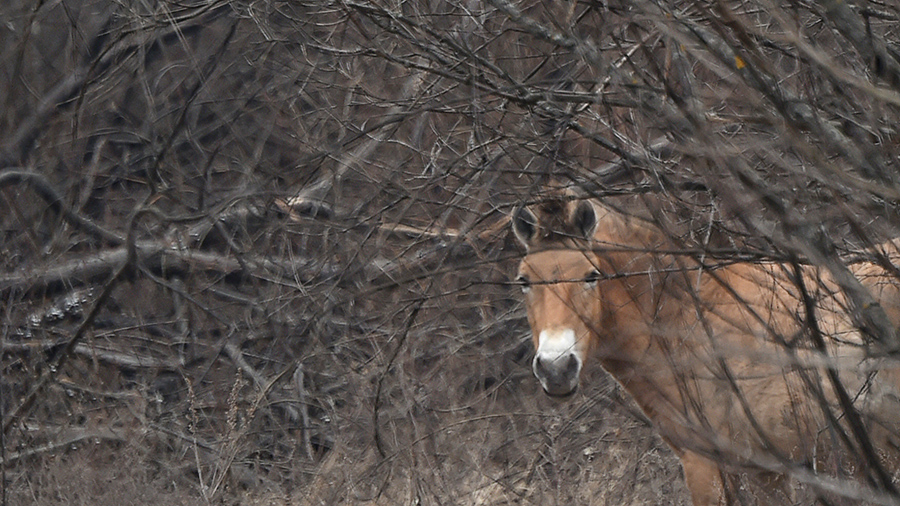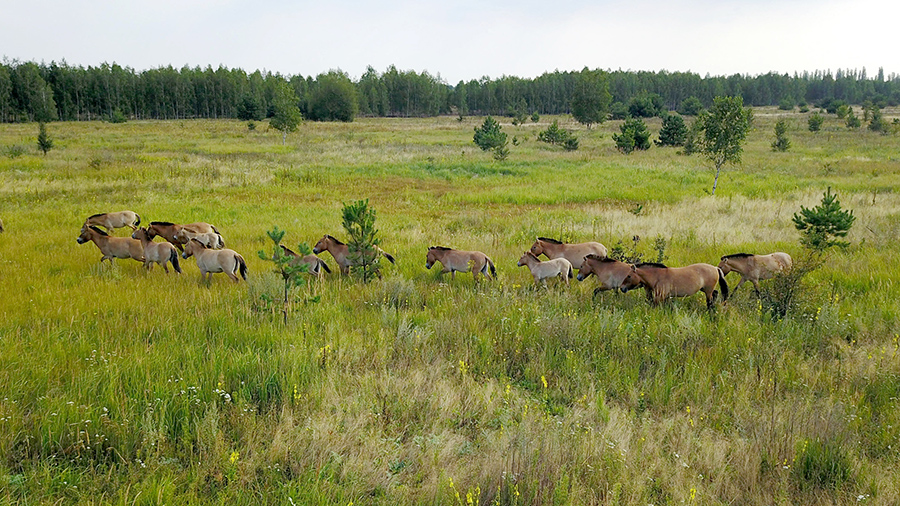01:26

On April 25 and 26, 1986, the world's worst nuclear disaster unfolded at Chernobyl, now in northern Ukraine, leaving the surrounding environment forever changed.
Now 35 years later, the area is still too dangerous for people to live in – but it has become an unlikely nature reserve, where animals and plants can flourish unhindered by human presence.

This rather rusty Ferris wheel stands in an abandoned amusement park in the ghost town of Pripyat, near the Chernobyl Nuclear Power Plant. /Sergei Supinsky/AFP
This rather rusty Ferris wheel stands in an abandoned amusement park in the ghost town of Pripyat, near the Chernobyl Nuclear Power Plant. /Sergei Supinsky/AFP
Right after the explosion of 1986 that released up to 30 percent of the nuclear plant's 190 metric tons of uranium and forced hundreds of thousands of people to be evacuated, the forests surrounding Chernobyl turned red and died because of the radiation.
Now Chernobyl is blossoming. Amid its deserted streets and abandoned buildings, overgrown with trees and plants, wild animals that had vanished from the area for decades have reappeared, including the Przewalski's horse, an endangered species originally native to the steppes of Central Asia, which almost reached extinction in the middle of the 20th century due to overhunting.

A Przewalski's horse wanders in a forest road in Chernobyl's exclusion zone. /Sergei Supinsky/AFP
A Przewalski's horse wanders in a forest road in Chernobyl's exclusion zone. /Sergei Supinsky/AFP
In 1998, scientists reintroduced 30 Przewalski's horses to Chernobyl's exclusion zone as part of their global efforts to preserve the species. Although the experiment was abandoned shortly after, the number of wild horses in Chernobyl has been multiplying, to reach 150 animals now.
"Paradoxically, this is a unique opportunity to preserve biodiversity," said Denys Vyshnevsky, head of the scientific department of the Chernobyl nature reserve created in the area five years ago.

Przewalski's horses surprisingly thrive in the area tainted by radiation, after having once disappeared in the wild. /Aleksndr Sirota/AFP
Przewalski's horses surprisingly thrive in the area tainted by radiation, after having once disappeared in the wild. /Aleksndr Sirota/AFP
Following these incredible results, Vyshnevsky said researchers are now hoping the area could offer the perfect environment to focus conservation efforts on restoring "landscape and the set of species that was typical for this territory 200 to 300 years ago."
One of the next potential candidates for reintroduction to the area could be the European bison, which became all but extinct by the 20th century and can now be found roaming over the border in Belarus.
"We'll be able to recreate the landscape that was here before humans began intensely exploiting the region," Vyshnevsky said.
Cover image: Sergei Supinsky/AFP
Video editor: Nuri Moseinco
Source(s): AFP

